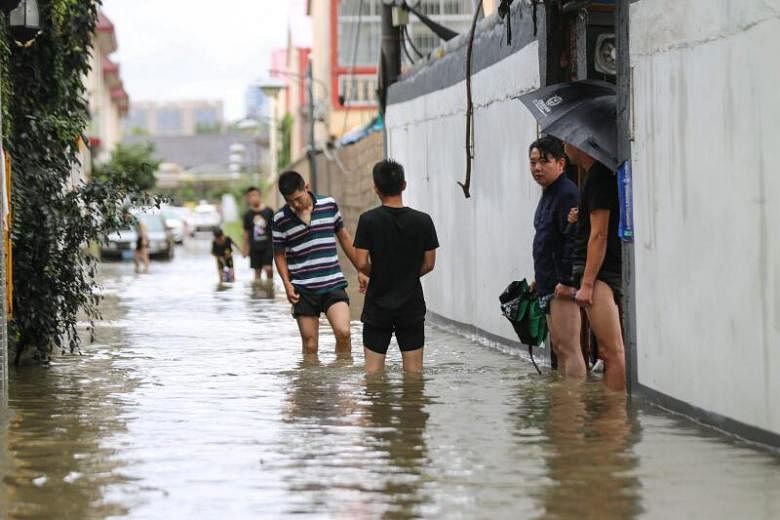BEIJING - Typhoon Hagupit barrelled into China's eastern Zhejiang province and Shanghai earlier this month, bringing heavy rain, which was a relief for a region sweltering in summer heat.
Its arrival on Aug 4 was well overdue. Hagupit was the first typhoon to make landfall on the Chinese mainland in well over a month - highly unusual considering that the July to September period is peak typhoon season for China, say Chinese meteorologists.
They pointed out that for the first time since 1949, China did not log a single typhoon in the month of July.
But heavy rain lashed 27 out of 31 of the country's provinces since June this year, causing widespread flooding and 179 billion yuan (S$35.3 billion) in economic losses. More than 63.46 million people were affected, latest figures released last week by Beijing showed.
The unusual weather, which has been blamed on factors including the El Nino phenomenon and global warming, has raised concerns about climate change.
China Meteorological Administration deputy director Yu Yong outlined the unusual weather at a press briefing last Thursday, saying that the wet season this year has been "complex", with "very uneven rainfall".
He pointed out that the southern parts of the country, particularly along the Yangtze river, has experienced a longer than usual rainy season, receiving 753.9mm of rainfall this year, the highest since 1961.
"The northern parts of the country are also experiencing a later rainy season, with more rainfall than usual," said Mr Yu.
And, despite the absence of a typhoon in July, he said the authorities were expecting seven to nine forming in the South China Sea or north-west Pacific Ocean in late August and September.
The lack of tropical storms in July this year - historically the hottest month in China - has left parts of the country sweltering in summer heat, with the mercury hitting 40 deg C in southern provinces like Guangdong and Fujian.
The China Meteorological Observatory said in a report last month that typhoons play an important role in cooling down these areas during the summer months, and also provide much needed precipitation to alleviate droughts.
"Taking a global perspective, if there are no typhoons, the coastal regions of China and areas along the Sea of Japan, India, South-east Asia and south-eastern United States would lose a quarter of their precipitation and could lead to shortage of fresh water," said the report.
Widespread flooding and more extreme heatwaves could become more commonplace in China as the climate changes, said the McKinsey Global Institute in June, flagging the threat of extreme and lethal heatwaves affecting 10 to 45 million people by 2030, particularly in the country's eastern provinces.
"In addition, China is forecast to face a higher likelihood of extreme rainfall," said the institute in a report, noting also that the number of people affected by riverine flooding is expected to grow from 67.5 million this year to 83 million in 2050.
But extreme weather also poses a threat to China's food security, with climate experts saying there will be a drastic impact on crop yields.
Associate Professor Zhang Junjie, director of Duke Kunshan University's Environmental Research Centre, told The Straits Times that yields of rice, wheat and corn in China could decline by 36.25, 18.26 and 45.1 per cent respectively because of climate change, citing a 2017 study that he co-wrote.
Prof Zhang added that Beijing has recognised the threat and was working to mitigate the climate threat.
"In particular, the recent focus on the restoration of ecosystems will increase the robustness of China's agricultural economy in response to more volatile weather in the future," he said.


